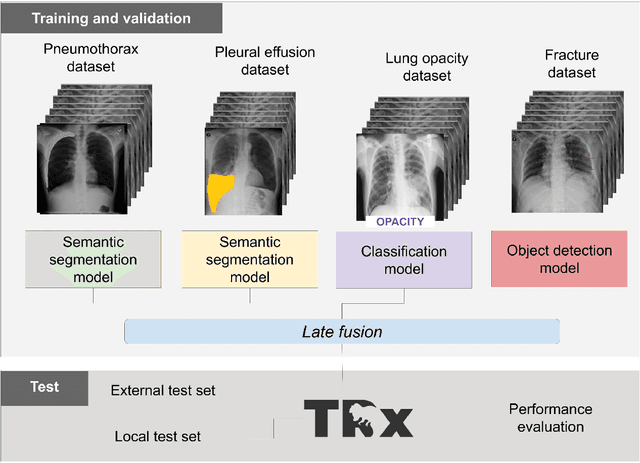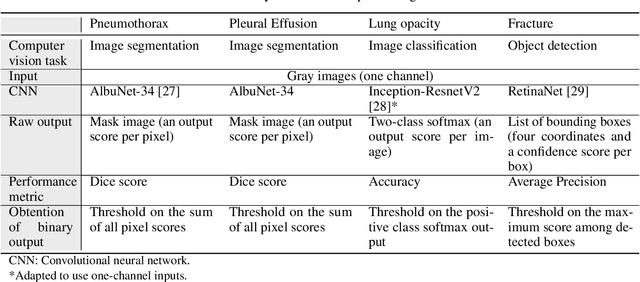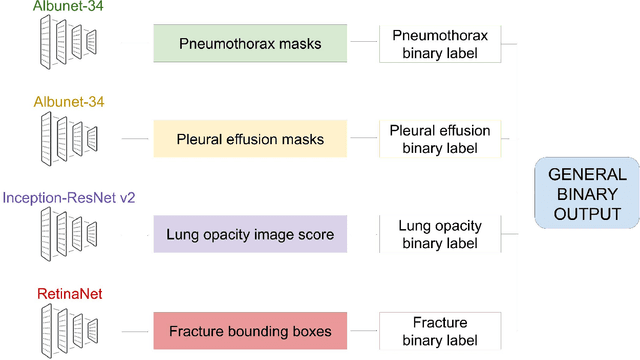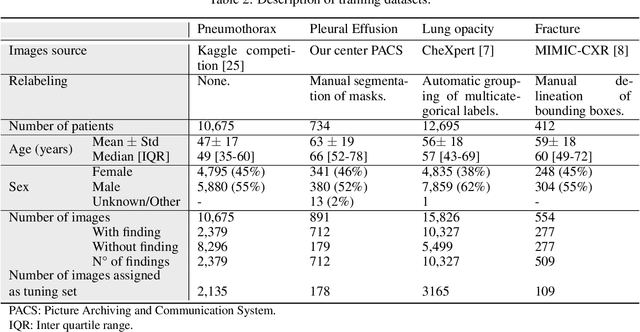Alberto Seehaus
Radiology Department Hospital Italiano de Buenos Aires
Chest x-ray automated triage: a semiologic approach designed for clinical implementation, exploiting different types of labels through a combination of four Deep Learning architectures
Dec 23, 2020



Abstract:BACKGROUND AND OBJECTIVES: The multiple chest x-ray datasets released in the last years have ground-truth labels intended for different computer vision tasks, suggesting that performance in automated chest-xray interpretation might improve by using a method that can exploit diverse types of annotations. This work presents a Deep Learning method based on the late fusion of different convolutional architectures, that allows training with heterogeneous data with a simple implementation, and evaluates its performance on independent test data. We focused on obtaining a clinically useful tool that could be successfully integrated into a hospital workflow. MATERIALS AND METHODS: Based on expert opinion, we selected four target chest x-ray findings, namely lung opacities, fractures, pneumothorax and pleural effusion. For each finding we defined the most adequate type of ground-truth label, and built four training datasets combining images from public chest x-ray datasets and our institutional archive. We trained four different Deep Learning architectures and combined their outputs with a late fusion strategy, obtaining a unified tool. Performance was measured on two test datasets: an external openly-available dataset, and a retrospective institutional dataset, to estimate performance on local population. RESULTS: The external and local test sets had 4376 and 1064 images, respectively, for which the model showed an area under the Receiver Operating Characteristics curve of 0.75 (95%CI: 0.74-0.76) and 0.87 (95%CI: 0.86-0.89) in the detection of abnormal chest x-rays. For the local population, a sensitivity of 86% (95%CI: 84-90), and a specificity of 88% (95%CI: 86-90) were obtained, with no significant differences between demographic subgroups. We present examples of heatmaps to show the accomplished level of interpretability, examining true and false positives.
 Add to Chrome
Add to Chrome Add to Firefox
Add to Firefox Add to Edge
Add to Edge